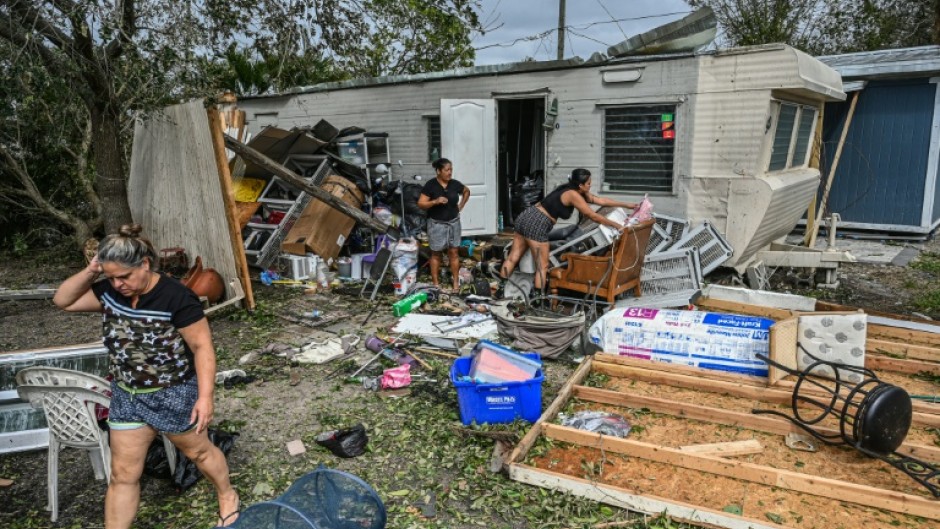
FLORIDA - Shocked Florida communities counted their dead on Saturday as the full scale of the devastation came into focus, two days after Hurricane Ian tore into the coastline as one of the most powerful storms ever to hit the United States.
Rescuers were still searching for survivors in flooded neighborhoods and along the state's southwest coast, where homes, restaurants and businesses were ripped apart as Ian roared ashore as a powerful Category 4 hurricane on Wednesday.
The death toll climbed to 24 on Saturday, according to the Florida Medical Examiners Commission, with some US media reporting it could be three times that.
Sixteen migrants also remain missing from a boat that sank during the hurricane on Wednesday, according to the US Coast Guard. Two people were found dead and nine others rescued, including four Cubans who swam to shore in the Florida Keys.
More than 1.2 million customers remained without power in Florida Saturday, hampering efforts by those who evacuated to return to their homes to take stock of what they lost.
"It's just flipped upside down, soaking wet, full of mud," resident Pete Belinda said of the home he and his wife share on the lower floor of their daughter's house in Fort Myers Beach, a town on the Gulf of Mexico coast which took the brunt of the storm.

Ian passed over Florida and into the Atlantic Ocean before making US landfall again, this time on the South Carolina coast on Friday as a Category 1 hurricane, with maximum sustained winds of 85 miles (140 kilometers) per hour.
It was later downgraded to a post-tropical cyclone, and is set to dissipate over Virginia later Saturday.
More than 320,000 people remained without power across North and South Carolina and Virginia, the tracking website poweroutage.us said Saturday.
"We're just beginning to see the scale of the destruction" in Florida, US President Joe Biden said Friday.
"It's likely to rank among the worst in the nation's history," he said of Ian.
With damage estimates running into the tens of billions of dollars, Biden said it's "going to take months, years to rebuild."
"It's not just a crisis for Florida," he said. "This is an American crisis."
CoreLogic, a firm that specializes in property analysis, said wind-related losses for residential and commercial properties in Florida could cost insurers up to $32 billion, while flooding losses could reach $15 billion.
"This is the costliest Florida storm since Hurricane Andrew made landfall in 1992," CoreLogic's Tom Larsen said.
- Rescues continue -

On Friday, the Coast Guard said it had made 117 rescues using boats and helicopters of people trapped in flooded homes.
Governor Ron DeSantis said hundreds of other rescue personnel were going door-to-door "up and down the coastline."
Many Floridians evacuated ahead of the storm, but thousands chose to shelter in place and ride it out.
Two hard-hit barrier islands near Fort Myers -- Pine Island and Sanibel Island -- were cut off after the storm damaged causeways to the mainland.
Aerial photo and video show breathtaking destruction in Sanibel and elsewhere.
In Fort Myers Beach, a recreational boat called Crackerjack sat atop a pile of debris like an abandoned toy. A trailer park was blasted away to almost nothing.
A handful of restaurants and bars reopened in Fort Myers, giving an illusion of normalcy amid downed trees and shattered storefronts.

Electricity was gradually returning, but many homes remain without power.
Human-induced climate change is resulting in more severe weather events across the globe, scientists say -- including with Ian.
According to a rapid and preliminary analysis, human-caused climate change increased the extreme rain that Ian unleashed by over 10 percent, US scientists said.

